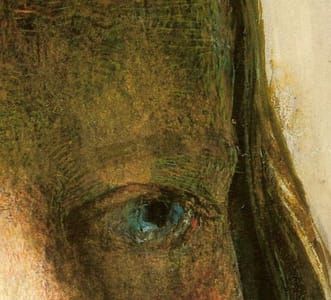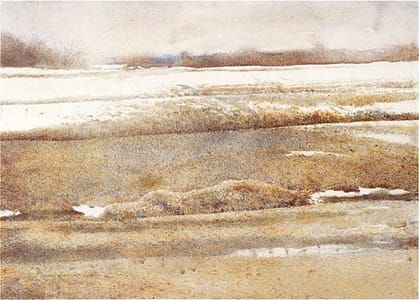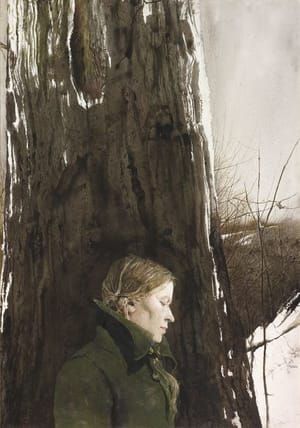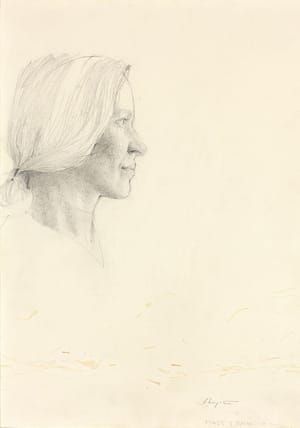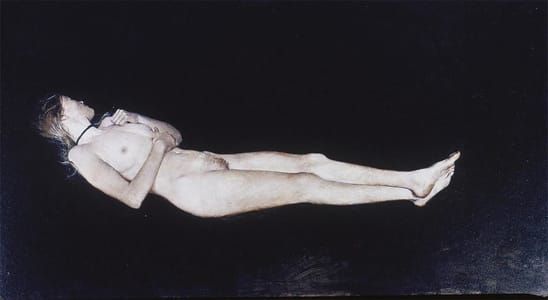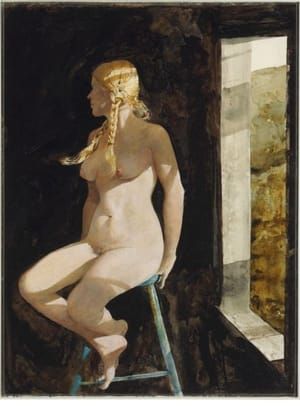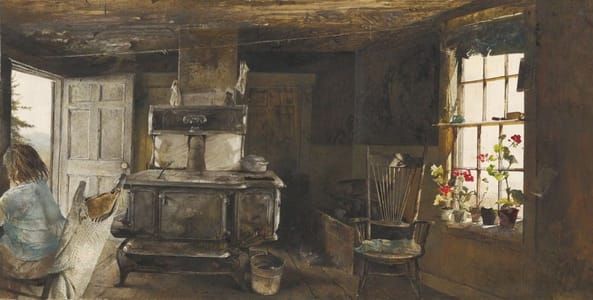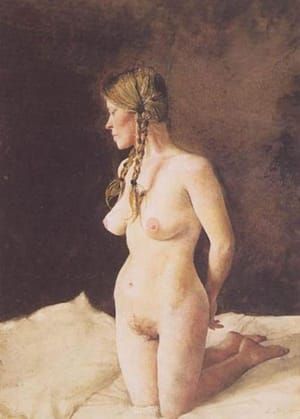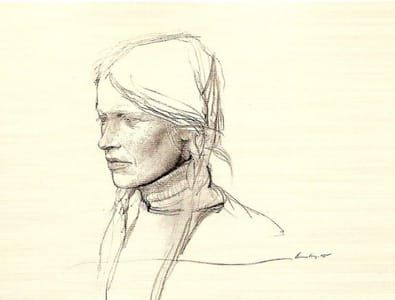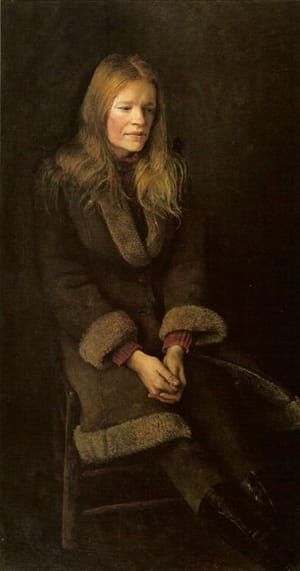

Pageboy, 1979
Andrew Wyeth
Andrew Wyeth was a magnificient draftsman and a master painter of the watercolor and egg tempera mediums. He employed a similar approach to painting with watercolor and tempera, building the basic structure of the whole scene with large, loose brushstrokes of neutral color. As those areas dryed he works into them with smaller cross-hatched strokes of drybrush, a technique where the brush is loaded with color and the color is dressed off the brush onto a rag to allow the color in the brush to dry to the right level where it can be hatched, drawn, and scumbled onto the painting's surface. The marraige of his loose washes and layers of knitted hatches of drybrush makes Wyeth's paintings rich in their surface textures and sensitivity of light.
(http://uhaweb.hartford.edu/JPATTERSO/HASinSicily/PTG_Study_Guides/Entries/2010/2/3_Andrew_Wyeth__Painting_America.html)
The American painter Andrew Wyeth divides his watercolours into plain watercolours and drybrush. He may start a painting as a watercolour, but during the process some of the paintings will change partly or fully to what he calls a drybrush. The drybrush technique is unique with a beautiful expression. It can be an inspiration for other watercolour painters as described in the following text....
Andrew Wyeth paints in both egg tempera and watercolour. His egg tempera technique is very detailed with rendering of tiny elements as for example the grass field in “Christina’s World”. It is the egg tempera technique, a technique where an initial wash is covered with the structure of woven dots and lines in different related or opposite colours, which is reflected in the watercolour drybrush technique.
In an interview Andrew Wyeth said to Thomas Hoving1: I work in drybrush when my emotion gets deep enough into a subject. So I paint with a smaller brush, dip it into color, splay the brush and bristles, squeeze out a good deal of the moisture and color with my fingers so there is only a very small amount of paint left. Then when I stroke the paper with the dried brush, it will make various distinct strokes at once, and I start to develop the forms of whatever object it is until they start to have real body…. Drybrush is layer upon layer. It is what you call a definite weaving process. You weave the layers of dry brush over and within the broad washes of watercolor. Andrew Wyeth’s curator Mary Landa has told that in some situations he use a special prepared brush with a tip which consists of down to one sable hair.
Meryman2 writes in general on Andrew Wyeth’s technique: Every watercolor has been like a battle, the outcome constantly in doubt. His breath fast, talking to himself, the glasses he wears paint-splattered with color, he attacks the paper with a frenzy, scratching it with the end of his brush, scraping it with a razor blade, dapping at it with Kleenex. Andrew Wyeth explains in an interview to the Greenville County Museum of Art3: I work with impulsiveness. I use eleven kinds of brushes, camel hair or sable or an old house painter's brush. Sometimes a scrub brush. I've torn pictures in half trying to get into them, to get structure and weight and form and succulence and passion.
(http://www.petervnielsen.dk/Drybrush_Andrew_Wyeth.shtml)
Uploaded on Jul 18, 2017 by Suzan Hamer
Andrew Wyeth
artistArthur
coming soon

